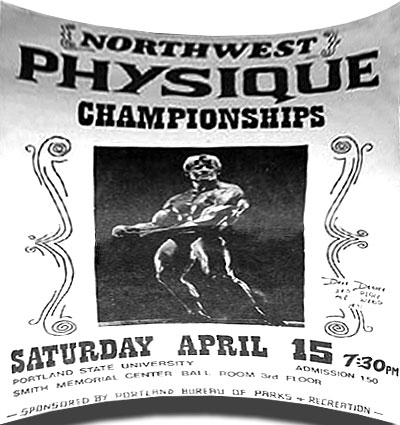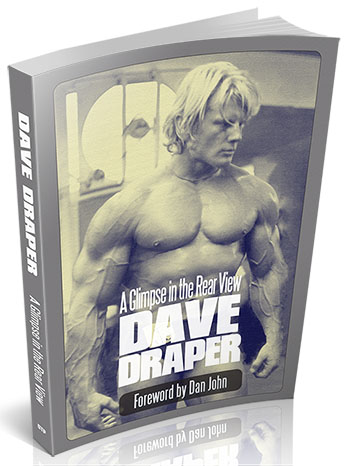360 Days to Get 2011 Right

Download the full Draper here newsletter
in printable, live-link, pdf format, here.
My most recent workout, day two of the New Year, was a 75-minute knockdown, drag-out affair. Upon its completion I staggered to my car not knowing if I had won or lost. No sooner did I regain my breath when someone rapped on the window and demanded I get out of their vehicle or they’d call the police. Startled, angered and ultimately embarrassed, I escaped through the trunk, concluding I had lost.
This was not the training moderation I promised in my 2011 resolution. I had chosen three well-proven axioms, cleverly strung them together and added my name for emphasis, thus devising a surefire New Year pledge: Slow down, take it easy ’n steady as she goes, Draper. Subtle, yet spunky.
I advise myself regularly, expecting I’ll learn something as I continue my journey, but seldom do I heed my own instruction. I insist upon accompanying myself to the gym with a big stick, a cow prod or a taser. It gets worse: I’m so impressed by the presence of the implements of persuasion, I’ve not once been required to wield them against me.
I cannot resist pausing to evaluate the psychology of this accommodating response: Is this cowardice or submission, intelligence or discipline? I suspect it’s some admirable adaptation of courage and strength, wisdom and inner-spirituality.
Whatever… the point is this: Excessive demand, workload and expectation are distressing and counterproductive. Should I continue engaging maximum force, the day will come when confronting the weights will be absolutely objectionable and detrimental.
Consider the following scenario of a hyper-workoutism: You’re racing to the House of Iron on Laverne Avenue for a typical onslaught and you cannot face it anymore so you pull a u-turn at Slocum Boulevard and your gym bag flies out the window hitting an elderly man in a electric wheelchair knocking him into the path of an oncoming van (which, incidentally, he miraculously survives without a scratch) smuggling strangers, guns and drugs from the border town of Chappahapez where stupid terrorists wrapped in blankets are discovered hiding in a camel shed behind the Marry-Us-Now, Por Favor Chapel. Just when things couldn’t get worse, Eric Holder arrives with Janet Reno to determine the authenticity of the marriage certificates obtained from the Department of Justice, and Animal Rights…
Do you see where I’m going with this? Slow down. Take it easy. Steady as she goes. What’s the rush?
I received three suggestions from curious, desperate and ever-searching diehards about some classic training MOs for the aged, injured or otherwise impeded: the 100-rep system, the 15-exercise peripheral heart action (PHA) and the slow-rep methodology.
The light weight, super-hi-rep system (one set of 100 reps of one exercise per body part) I equate to pinching the muscles with tweezers until you’re burning with pain and your mind is numb. Does it work? Who has the patience, the discipline, the continuity to find out? And with computers and calculators and widgets these days, does, can or will anyone count that high?
It sounds like self-imposed iron-boarding and none of us have secrets so important to hide. I’ll pass. Let’s raise the weight, lower the reps and increase the sets to two or three or four. Reality training for all ages, breeds and sects.
Multiple-set training is fun and effective (they call me Kid Superset, or at least they used to… I think), but having 15 exercises at one’s disposal is a bit of a reach. This extended methodology was researched by notable champs for about 10 minutes during the ‘70s when bell bottoms and disco were the craze. I’m good for five complementary exercises in a row for three or four sequences of medium reps, and revisit the plan from time to time for the pleasure and value of it.
Give it a whirl. Repeat after me: Slow down. Take it easy. Steady as she goes. What’s the rush?
We’re working on it.
I’m an advocate of focused, creative, groove-meticulous repetitions ranging from six to 12 and 15. Four sets have become standard issue, sometimes five when I feel zippy, and a total of six movements wrap it up. Gee, sounds like a confession…
But slow reps of the two-to-three count contraction and two-to-three count extension are more than I can bear. This measured tempo might enable hurting lifters to proceed with caution, but as a preferred musclebuilding method, it is to me intolerable. Safety first, hypertrophy tomorrow or next week.
One, one-thousand. Pumping! Two, one-thousand. Burning! Three, one-thousand. Scream! Brief, miserable pause and down. Barf! One, one-thousand. Pass me the rifle. Two, one-thousand. The shells, please. Three, one-thousand.
I jest, sorta. The gentleman who kindly recommended the slow-rep methodology is not alone and hoped I’d relate the advantages of the style to his fellow bombers. I’m sure it’s beneficial. Try it… or not.
I think it’s a personality thing, like driving on the freeway; I‘ve got to be in the fast lane, even if I’m in no rush, even if I’m in stalled traffic, even if I’m a passenger on a bus. Let’s go, coming through.
I’m not frustrated.
How’s it go again? Oh, yeah! Slow down. Take it easy. Steady as she goes.
Godspeed… Dash Draper
---
Soak yourself in a taste of bodybuilding’s Golden Era with Dick Tyler’s on-the-scene record, written in his easy-going, one-of-a-kind style, West Coast Bodybuilding Scene.
Take a trip over to our
New Musclebuilding Q&A Blog
... where Dave allows us a peek into his email outbox.
Did you sign up for Dave's expanded email yet?
It's free, motivating and priceless!
We'll also send you a link to Dave's free
Body Revival Tips and Hints e-report with your confirmation notice.

